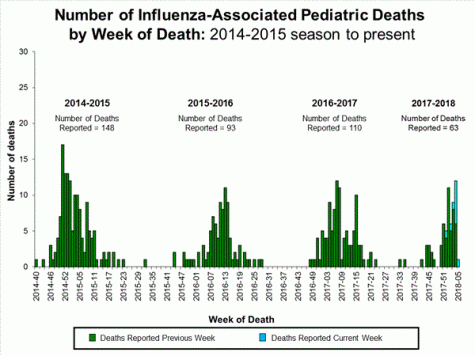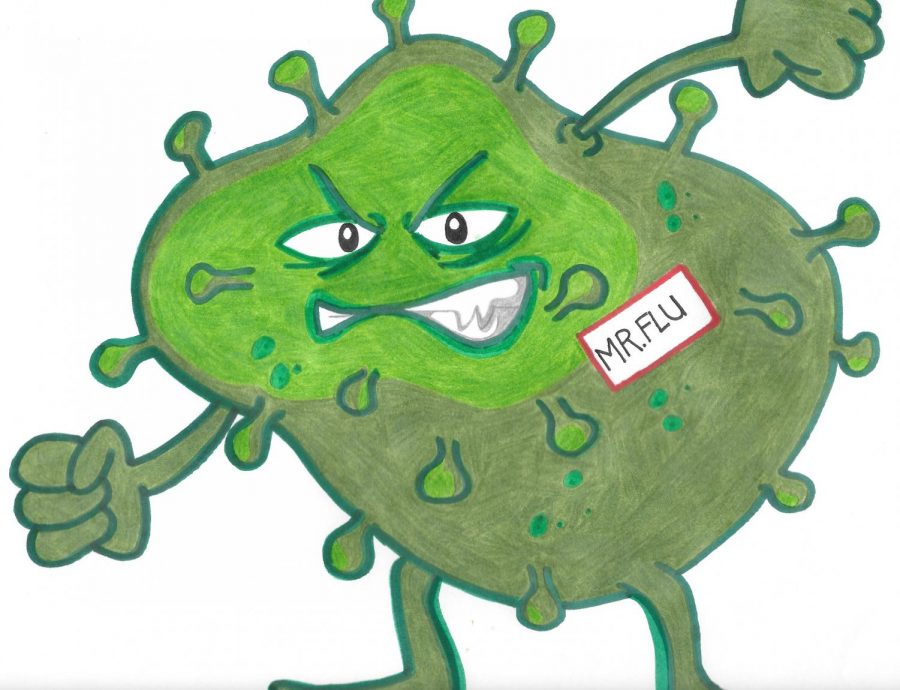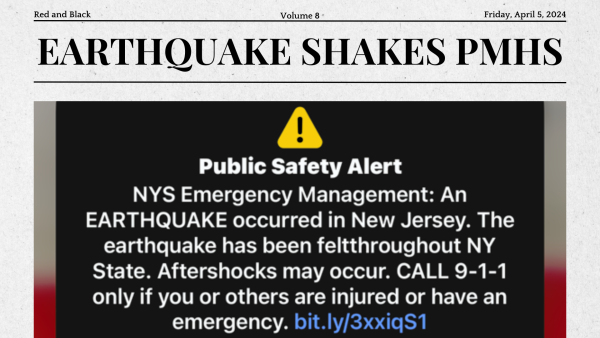The Flu Strikes Back
The flu. Influenza. Let’s talk about that. As anyone can tell you, the flu is a highly contagious respiratory virus/illness that makes you feel absolutely miserable and can possibly even kill you. It can affect anyone, young or old, big or small — especially in the current flu season, which any Google search will tell you is one of the worst flu seasons to date. The flu is easily spreadable, especially in crowded areas like schools or the workplace (doubly so if you’re a health care worker, since you’ll see increased exposure to the virus anyway). In New York alone, four children have died from the flu so far, and that number is expected to slowly increase. Why are so many people dying from such a known disease? Why aren’t the preventative shots doing their job? How will this stop?
The most well-known influenza outbreak was in 1918 (Spanish Flu) when 20 to 40 million people were killed in the U.S. Since then, the flu has made an appearance in American households annually. It has proven its power by taking the lives of people of all ages. Every year, there is a noticeable increase in the death count caused by the flu. So much so, that it has been a constant story on the national news. Understandably, scientists are scrambling to find a surefire cure.
The flu kills people each year, and although the exact number cannot be calculated, an estimated 53 pediatric deaths have been reported nationwide for the 2017-2018 season so far (as seen in the chart below, courtesy of the Center for Disease Control). In addition, the highest rate of hospitalization is among adults age 65 and over, followed by adults aged 50-64 as seen here (also recorded by the CDC). The World Health Organizatio n states that those most at risk (in addition to the elderly) are pregnant women, children under 59 months (roughly 5 years old), individuals with existing chronic health conditions, and people with HIV/AIDS or those undergoing chemotherapy. The WHO also recommends that these groups, as well as health care workers, be vaccinated annually.
n states that those most at risk (in addition to the elderly) are pregnant women, children under 59 months (roughly 5 years old), individuals with existing chronic health conditions, and people with HIV/AIDS or those undergoing chemotherapy. The WHO also recommends that these groups, as well as health care workers, be vaccinated annually.
Speaking of vaccinations, let’s talk about the effectiveness of the flu shot. For those not in the know, the most common flu shot, and the one you’re most likely to receive, uses an inactive or dead form of the influenza virus. This allows your body’s immune system to recognize that specific strain of the virus to combat it in the future, without seriously harming you. The CDC website states that, according to recent studies, the flu vaccine “reduces the risk of flu illness between 40% and 60%,” across the general population in seasons where the vaccine well-matches the current strain that’s haphazardly fumbling about. This “matching” is one of the biggest factors in how effective a flu shot will be, with the characteristics of the person in question being the other contributor. It’s easily inferred that in years where the vaccination is a bad match with the current strain making its way downtown, the effectiveness of it is incredibly low.
Just to bring this a little closer to home, in an interview with one of the school nurses, when asked about the number of students who had left school early due to illness, the number was over 300. And while we are sure not all of these numbers can be attributed to the flu, we know firsthand that many of them are, as many of our peers were out of school suffering from it.
So what exactly is there to learn from all this? The flu is bad. Take precautions. Wash your hands and play it safe this flu season.

Gr. 12
"It's good as an artist to always remember to see things in a new, weird way." -Tim Burton

Phoebe is in her senior year of high school and has been a dedicated part of the school newspaper and Journalism class since her freshman year. Although...

Grade 9
“My mission in life is not merely to survive, but to thrive; and to do so with some passion, some compassion, some humor, and some style”
~Maya...











